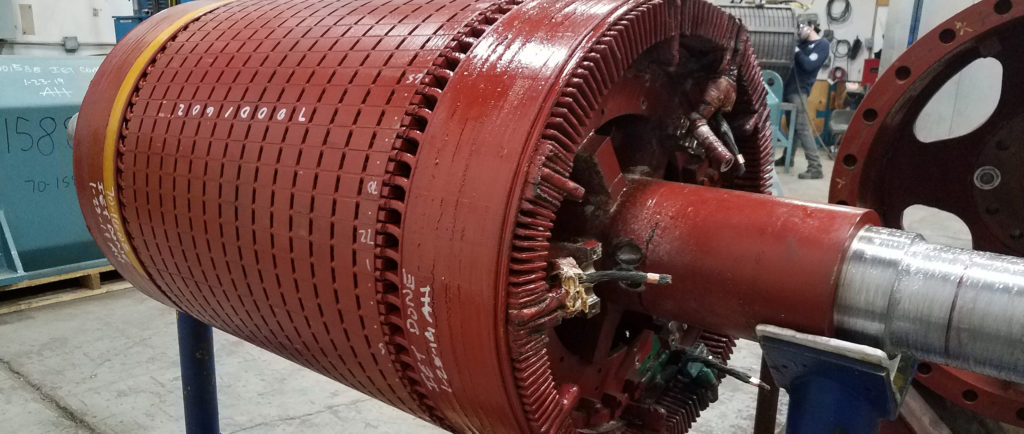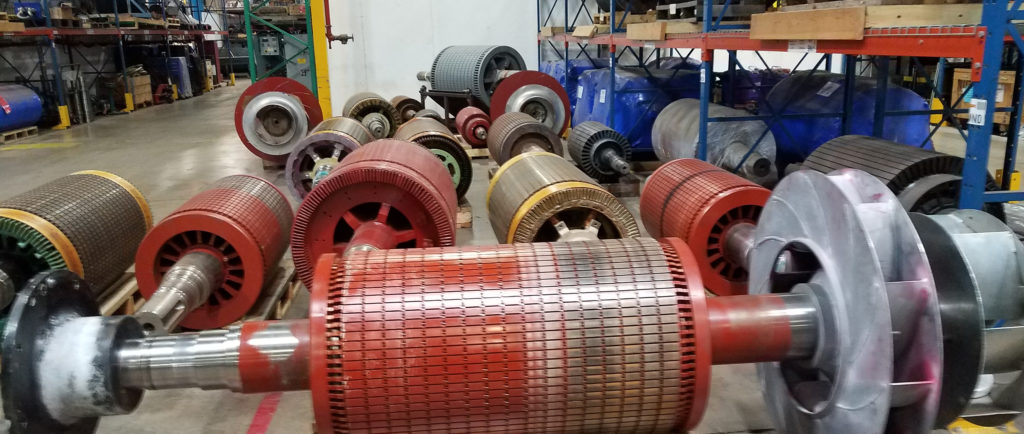A new web-based tool named WinNER uses reliability data to lower operations and maintenance costs
The wind industry around the globe has grown enormously over the past two-plus decades. According to the Wind Vision report by the U.S. Department of Energy (DOE), there were about 2.5 gigawatts of wind capacity installed in just four American states in 2000. By July 2022, wind capacity had skyrocketed to over 140 gigawatts across 36 states.
Future growth projections for both land-based and offshore wind projects are also robust. The DOE forecasts that by 2050, total wind capacity will surpass 404 gigawatts, with onshore and offshore projects in 48 states. As the wind industry continues to mature and plays an increasingly important role in powering a decarbonized society, avoiding unexpected outages has become an ever more vital priority.
Enhancing the reliability of wind farms and turbines—and being able to proactively address potential problems before they lead to unplanned outages—is essential if electricity is going to power transportation, heating and cooling, and an expanding list of industrial uses. But it is also critical to the operators of wind farms, who depend on continuous turbine uptime and predictable operations and maintenance (O&M) costs to maximize revenues.
For example, unscheduled fault-driven events and downtime can drive over 60 percent of land-based turbine O&M costs. That share is equal to one-third of overall operational expenses. Equipment failure that necessitates replacements can also be very expensive and can lead to prolonged turbine downtime. For instance, installing a new gearbox can cost upwards of $400,000, and a generator can cost between $100,000 and $225,000.
The Wind Network for Enhanced Reliability (WinNER) Tool
Understanding, identifying, and proactively addressing the factors that reduce turbine reliability motivated the development of the Wind Network for Enhanced Reliability (WinNER) web-based tool. “What are the challenges in the wind industry? Obviously, number one is the increase in operations and maintenance costs that come from wind turbine usage,” said Dr. Raja Pulikollu, an EPRI principal technical leader. Pulikollu has spearheaded the development of WinNER and other wind reliability research at EPRI.
According to Pulikollu, EPRI’s research has two primary objectives. “Number one is to find the reasons for turbine failure. Why are systems failing, and what are the failure modes?” Pulikollu said. “The second is to help operators pick the right suppliers of the major systems and components like the blades, pitch bearing, main bearing, gearbox, generator, and turbine models by looking at reliability data. That is what we do with the WinNER tool.”
Using Data to Make Budgeting and Procurement Decisions
Even though the wind industry has matured quickly, it is still relatively young. In the industry’s early years, the focus was almost entirely on turbine uptime. “When wind turbines got momentum around 2007, most of the attention was on how to keep the turbine up and running,” Pulikollu said. “Turbine operators wanted their availability to be higher because the more power they generated, the more money they earned.”
Complexity has been another factor limiting the attention paid to reliability. For example, not only are there at least eight gearbox suppliers, there are also half a dozen suppliers of bearings that go into the gearbox. Other equipment that goes into wind turbines and farms has similarly diverse collections of components and suppliers.
What has historically been lacking are data. In particular, data that could connect everything from specific components and suppliers to the geographic location of wind turbines simply haven’t existed. Wind farm operators have had to make procurement and O&M decisions based solely on their experience. “Some operators would allot millions for O&M purely based on experience. Not much was driven by data,” Pulikollu said. “Once you have data in hand, there are many levels where you can gain value from it. One is your existing fleet supplier selection, but you can also improve inventory management and equipment selections for future farms. Data is what allow you to move away from experience-based reliability estimation.”
When Pulikollu joined EPRI in 2017, he began the work of assembling, standardizing, and digitalizing the data necessary to build WinNER. This required the creation of a database that stored a wealth of information about wind turbine deployments. Data collected on individual turbines include where they are located, where they were manufactured, when they were installed, and who supplied major components. “If something failed, we collected information about when it failed, when it was replaced, which component failed, what the failure mode was, and how the damage was detected,” Pulikollu said.
The database now holds data from more than 10,000 turbines totaling 20+ gigawatts of installed capacity. These include turbines made by seven different original equipment manufacturers (OEMs) with ratings ranging from 1 to 4.5 megawatts, as well as major systems made by multiple manufacturers. The database also includes thousands of data points about system failure, which can be used to develop reliability and health monitoring models.
What Data Say About the Causes of Premature Failure
The data collection and analysis that have gone into the development of WinNER have already surfaced important lessons about turbine and component reliability. Among these are the specific factors that cause premature failures. The top four causes of failures are:
- Issues with manufacturing quality. As the wind energy market has expanded, so too has the demand for low-cost turbines and other components. Meeting that demand, however, can result in equipment defects that reduce reliability. “You have OEMs trying to reduce costs to meet the demands of industry,” Pulikollu said. “And if you do that, you may give up quality.”
- Improper load design. Bearings, gears, and other components have to be designed properly to maintain high reliability. Improper designs result in non-uniform loads and stresses that can hamper reliability and result in failures.
- Inadequate maintenance. The way operators approach maintenance significantly impacts the reliability of wind turbines and farms. Is a turbine proactively maintained, or is maintenance deferred until the turbine fails? Not surprisingly, the data show that more proactive maintenance results in higher reliability.
- Variable wind characteristics. Wind farms are understandably located in places where the wind resource is reliable and robust. But wind characteristics vary considerably from one location to another and with the proximity of other wind turbines and farms. “Is my farm located in a high wind region subjected to high turbulence intensity? Or are there neighboring wind turbines and/or farms causing wind wake on my turbines that result in higher loads and lower reliability?” Pulikollu said.
The collection of data to develop WinNER has also surfaced other insights about the causes of equipment failure. In the first seven years of a turbine’s operation, for instance, defects in materials and design, as well as other internal factors, are the primary causes of failure. After seven years, however, external factors like a farm’s location, wind characteristics, and maintenance strategies are the primary drivers of turbine major systems failure.
Different Views of Reliability
More than 20 gigawatts of data provide a lot of insights and lessons about wind farm reliability. WinNER also provides wind farm operators both granular and macro perspectives on reliability. It provides four different views:
- Industry-wide. Because WinNER’s database includes reliability metrics from such a wide range of wind farm types, turbine models, sizes, and locations, it can demonstrate how reliable the industry is as a whole and whether or not reliability is improving.
- Across WinNER member fleet. Operators can use WinNER to assess the overall reliability of their fleets. A member can first examine reliability data about the turbines and components installed at its own wind farms. Those data can then be compared to aggregated anonymized data in WinNER to benchmark reliability against other operators with similar fleets. These comprehensive WinNER data assist operators with O&M budget forecasting, identification of wind farms with higher-than-average failure rates, inventory management, and resource planning.
- Turbine level. Utilities and plant operators using WinNER can also gauge the reliability of specific turbine makes and models in their fleets. Reliability data about the actual turbines they’re operating can provide insights to inform O&M budgets. Operators can also use the data to benchmark their turbine reliability against that of fleets with similar turbine makes and models and to schedule more preventive maintenance.
- System level. WinNER provides reliability data about a range of wind turbine systems/components. For example, users can view reliability data about specific blade, gearbox, and generator makes and models, failure locations, and damage modes. These system-level reliability data assist operators in identifying critical components, selecting suppliers, identifying and rectifying serial defects, and upgrading components.
More than 25 utilities/operators have been participating in WinNER and gaining value at multiple levels reducing their O&M costs. For example, Duke Energy, Portland General Electric (PGE), and Xcel Energy use WinNER to forecast future failure rates and to plan O&M budgets. “Duke’s collaboration with EPRI on the WinNER platform has enabled better insights into major component health and reliability across the fleet through benchmarking and understanding our platforms in comparison with industry failure rates,” said James Bezner, director of performance services for Duke Energy Sustainable Solutions. “The WinNER platform, paired with Duke’s in-house major component predictive capabilities, has led to an improved understanding of the health and risk of these components and a reduction in failure rates enabled by early detection and mitigation of catastrophic failures.”
EPRI is continuing to expand the value of WinNER. That effort currently includes collecting the data necessary to identify the causes of damage to turbine blades, main bearings, and pitch bearings. EPRI is also developing physics-based machine learning models that can proactively identify major system/component damage by examining historic operations and loading cycles.
The ultimate aim of the wind turbine health monitoring models is to identify damage in its early stages, before it results in a failure. “That is where early damage detection comes in and where replacing critical components with better products comes in,” Pulikollu said. “We want the turbine failure rate to come down, reducing O&M costs and increasing production revenue.” EPRI technologies provide $1 million in value per year at a typical wind farm. “Supplier selection based on reliability reduces future O&M costs at a typical wind farm by $2 to $4 million,” says Pulikollu. “This is based on turbine systems and components that can last for the remaining 15 to 20 years with no further full replacements.”
EPRI Technical Expert:
Raja Pulikollu Ph.D.
For more information, contact techexpert@eprijournal.com.
ADDTIONAL RESOURCES
Additional Resources:
- Wind Network for Enhanced Reliability (WinNER) Web-Based Tool
- Wind Turbine Gearbox Reliability Assessment: Value of Increased Reliability and Reduced Operations and Maintenance Costs
- Wind Turbine Gearbox Physics-Based Machine Learning Model for Effective Health Monitoring: Early Damage Detection to Reduce O&M Costs
- Wind Turbine Generator Reliability and Damage Prediction: Generator Technologies, Failure Modes, and Life Impact Factors
- Wind Turbine Gearbox Reliability, Damage Prediction, and Recommendations for Life Improvement: Digitalization of Wind Assets to Reduce O&M Costs




